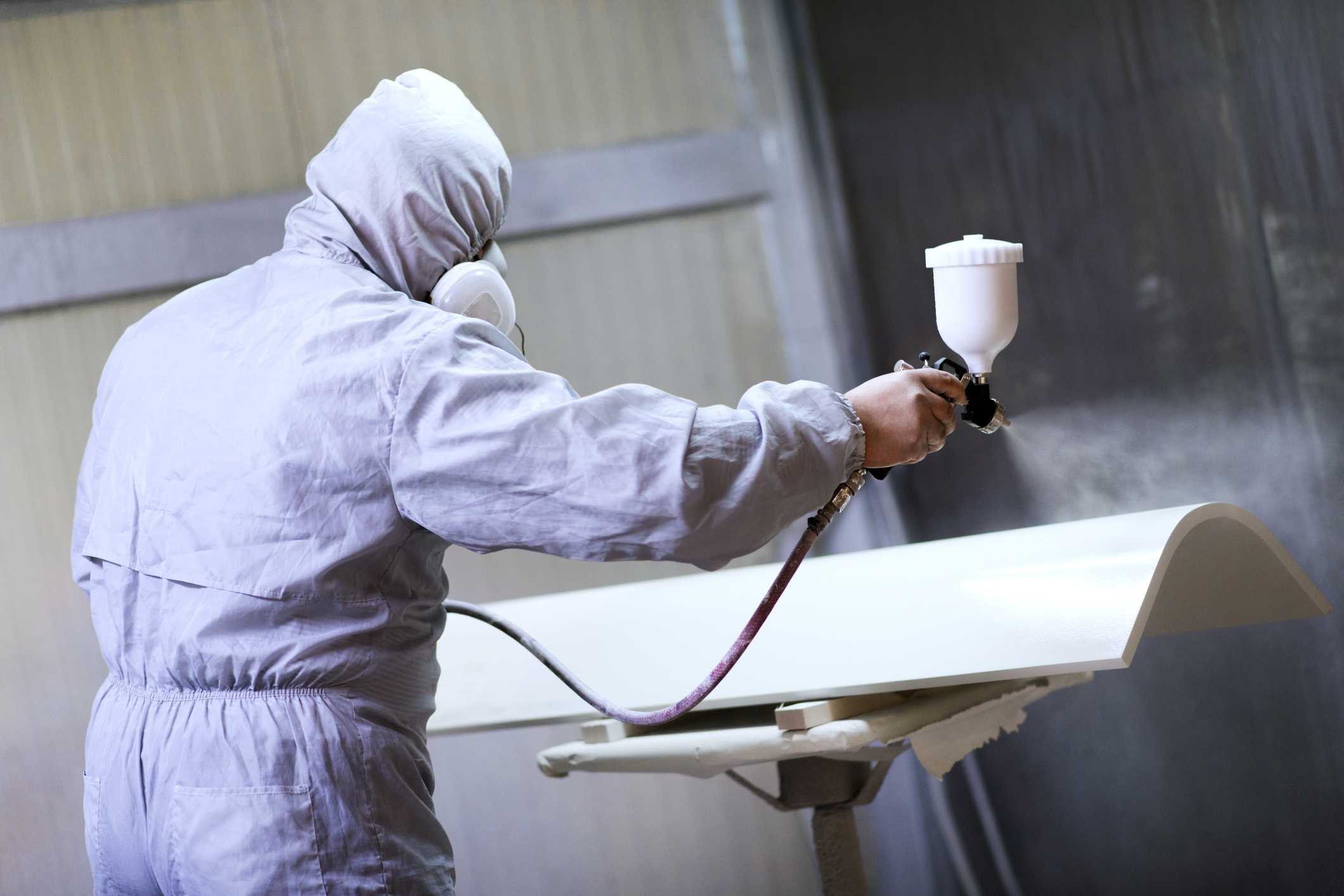
The
best type of spraying application method for any particular Teflon™ coating depends
upon a number of factors. That’s why we recommend you
always consult
Teflon Fact
Sheets
for both “preferred” and “not preferred” methods. Fact sheets outline Teflon
properties and can even be as specific as what kind of gun to use, the best
nozzle size, or what the ideal air pressure range should be, for instance.
Teflon
coatings are usually applied with commercial spray techniques in a hood or well-ventilated
area. You should keep water-based and solvent-based spray guns separate and not
use one for both. Many coatings are shear sensitive, and the action of the
needle moving in the fluid tip of the gun can cause coagulation. Minimize this
coagulation by keeping the fluid delivery open and altering the fluid delivery
by regulating the pressure on the pressure pot.
Manual
Spray
More
often than not, Teflon can be applied manually with compressed air and standard
spray equipment. All spray equipment should be made from aluminum or stainless
steel or coated with Teflon S. Transfer lines should be chemically inert and
solvent resistant (e.g. Teflon tubing, polyethylene, or stainless steel). Air
lines must be trapped to prevent oil or water from contaminating the compressed
air or the product.
Manual
Spray Application Tips:
Automatic
Spray
Automatic
spray guns are generally used in large volume, conveyorized systems, where the
parts to be coated are uniform in shape. While the set-up requires experience
and careful adjustment, films can be applied more uniformly and at a faster
rate. The finishes are fed to the guns through pressure pots with fluid
pressures in the range of 5-8 psi (0.5-0.6 kg/cm2). Where flat items are
carried on a flatbed conveyor, the spray guns may reciprocate transversely and
spray continuously.
Electrostatic
Spray
Electrostatic
guns or discs are suitable for the application of many Teflon coatings. The
advantages of electrostatic application include better film uniformity and 10%
to 15% savings in material, due to the reduction in overspray. High volume
production is usually required to justify the expense of automatic
electrostatic systems, but relatively low-priced hand units are available.
Airless
Spray
This
technique uses high pressures to atomize and direct the coating material. Since
the opening of the gun tip is generally smaller in diameter than in
conventional compressed air spray, shear conditions during spray may be too
high for aqueous Teflon products. Airless spray is generally used when coatings
must be applied in deep recesses.
Powder
Coating
Teflon
powder coatings are free-flowing powders which are applied with conventional
electrostatic powder equipment, with either spray guns or fluidized bed. The application
voltage and technique depends on the particular equipment, although the highly
attractive nature of the powder permits a wide range of application voltages.
What
about Multiple Coats?
Many
Teflon coatings can be applied in multiple coats. This process requires careful
attention to bakes of intermediate coats to prevent deterioration of underlying
coats. The opportunity to apply multiple coats also depends on the wettability
of the intermediate coats. This property varies considerably depending on the
product. Consult the Fact Sheet for the product you are using to see if it can
be applied in multiple coats.
To
view Teflon Fact Sheets and other Teflon Technical Literature, please
login or register for an account.
Additional
Resources:
Chemours-recommended
“Guide for the Safe Handling of Fluoropolymer Resins”:
https://www.plasticseurope.org/en/resources/publications/108-guide-safe-handling-fluoropolymer-resins
Chemours
introduction to Fluoropolymers:
https://www.chemours.com/Teflon/en_US/assets/downloads/pdf/teflon-introduction-fluropolymers.pdf
SPI
Guide for Safe Handling of Fluoropolymers:
https://fluorogistx.com/its-assets/SPI_Guide_for_Safe_Handling_of_Fluoropolymer_Resins.pdf
…And
more application tips:
https://fluorogistx.com/teflon-application-overview
